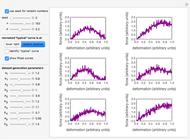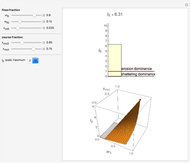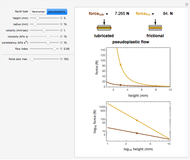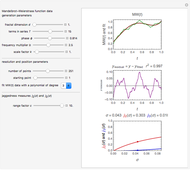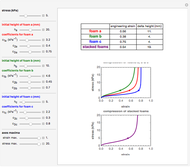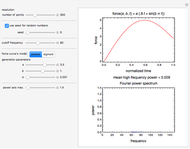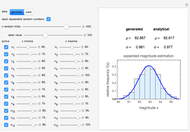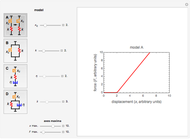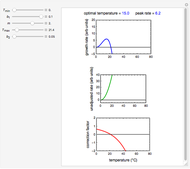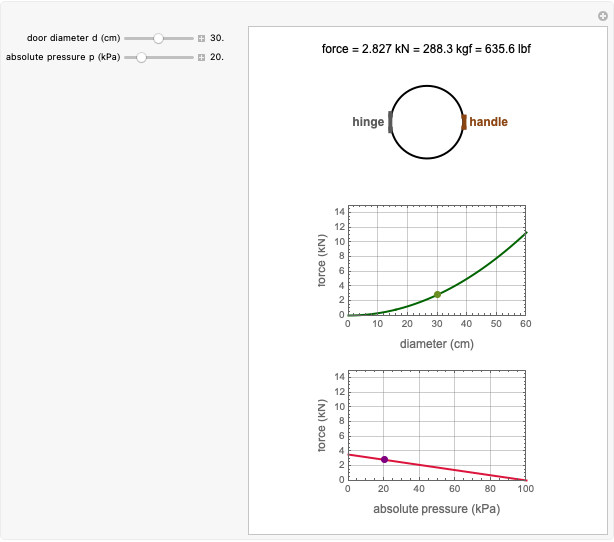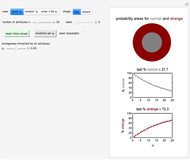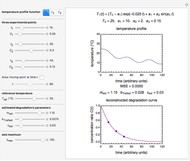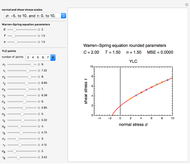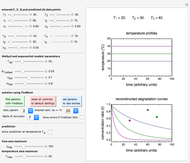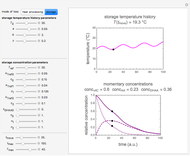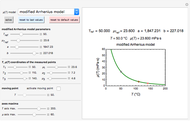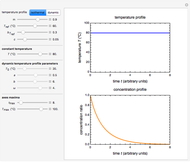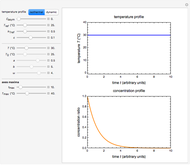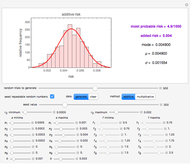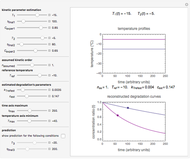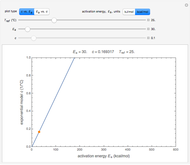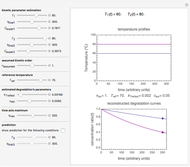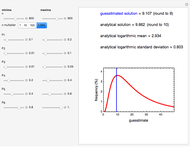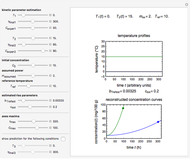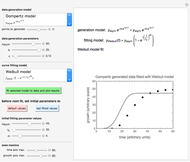Mechanical Sensitivity of Soft Testing Machines

Requires a Wolfram Notebook System
Interact on desktop, mobile and cloud with the free Wolfram Player or other Wolfram Language products.
This Demonstration illustrates how the mechanical sensitivity of a testing machine is affected by the ratio of the stiffness of the specimen to that of the machine. An idealized situation is considered, in which both the machine and the specimen have constant stiffness. The mechanical sensitivity is defined as the ratio of the change in resistance of the machine-specimen array to that of the specimen alone.
Contributed by: Mark D. Normand and Micha Peleg (March 2011)
Open content licensed under CC BY-NC-SA
Snapshots
Details
Snapshot 1: stiff machine operating in its designed load range
Snapshot 2: stiff machine operating outside its designed load range
Snapshot 3: soft machine sensing a specimen whose stiffness is comparable to its own
Snapshot 4: soft machine sensing a specimen whose stiffness is much greater than its own
Man-made mechanical testing machines are deliberately constructed from very stiff (rigid) materials. Thus, when operating within its designed load range the machine's own deformability is negligible relative to that of the tested specimen. This is not the case in human sensory systems, for example, the fingers, in which the object being sensed can be of comparable or even higher stiffness. For simplicity, we assume that the machine has a constant mechanical resistance,  , and the specimen a constant mechanical resistance,
, and the specimen a constant mechanical resistance,  , both in arbitrary units. Since the two are in series, the mechanical resistance of the array,
, both in arbitrary units. Since the two are in series, the mechanical resistance of the array,  , equals
, equals  . We define the mechanical sensitivity,
. We define the mechanical sensitivity,  , as
, as  . (
. ( should not be confused with the detection threshold, which is determined by other factors.)
should not be confused with the detection threshold, which is determined by other factors.)
This Demonstration calculates and displays the value of the mechanical sensitivity,  , and plots it versus the
, and plots it versus the  /
/ ratio.
ratio.
Note that the mechanical sensitivity can also be defined in other ways and that when it comes to fingers, for example, neither  nor
nor  needs to remain constant. For details see the reference:
needs to remain constant. For details see the reference:
M. Peleg and O. H. Campanella, "The Mechanical Sensitivity of Soft Compressible Testing Machines", Journal of Rheology, 33(3), 1989 pp. 455–467.
Permanent Citation







